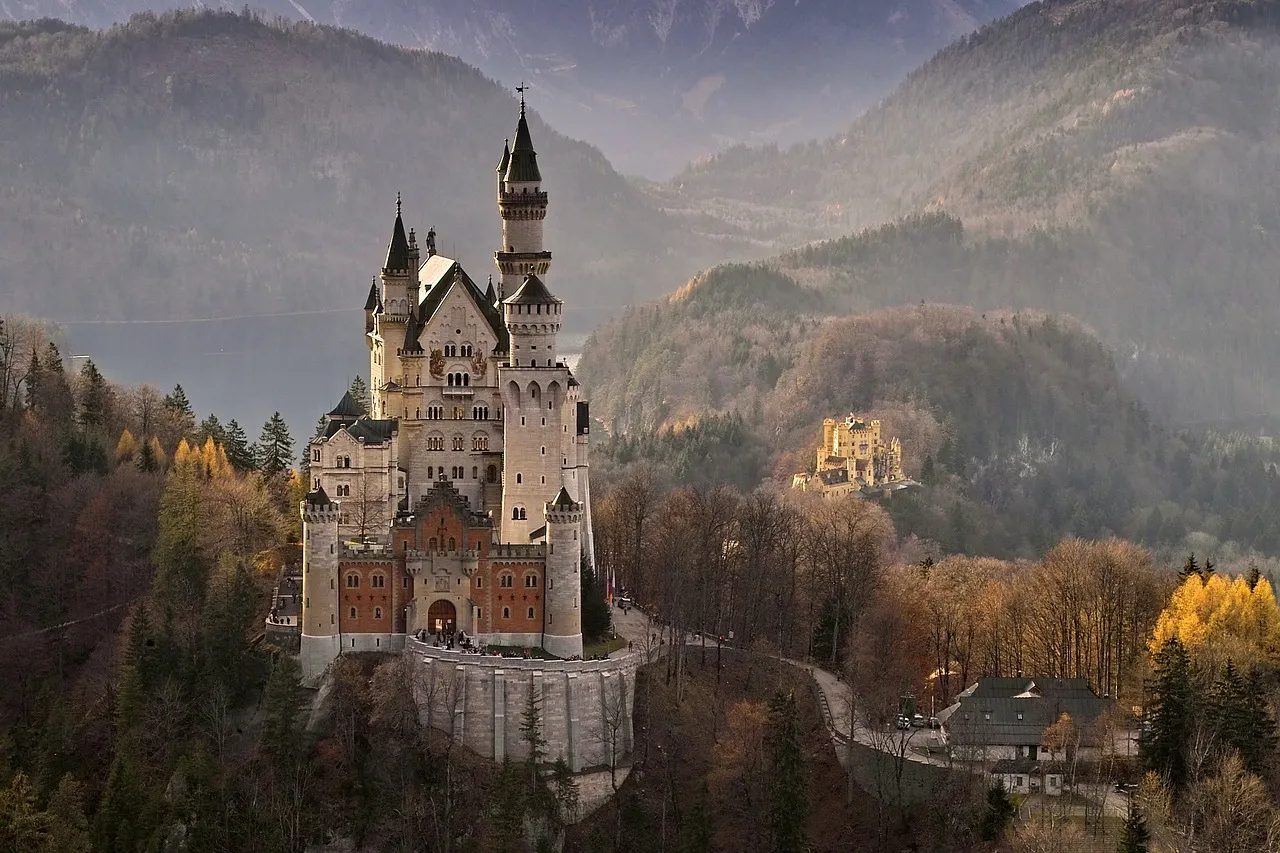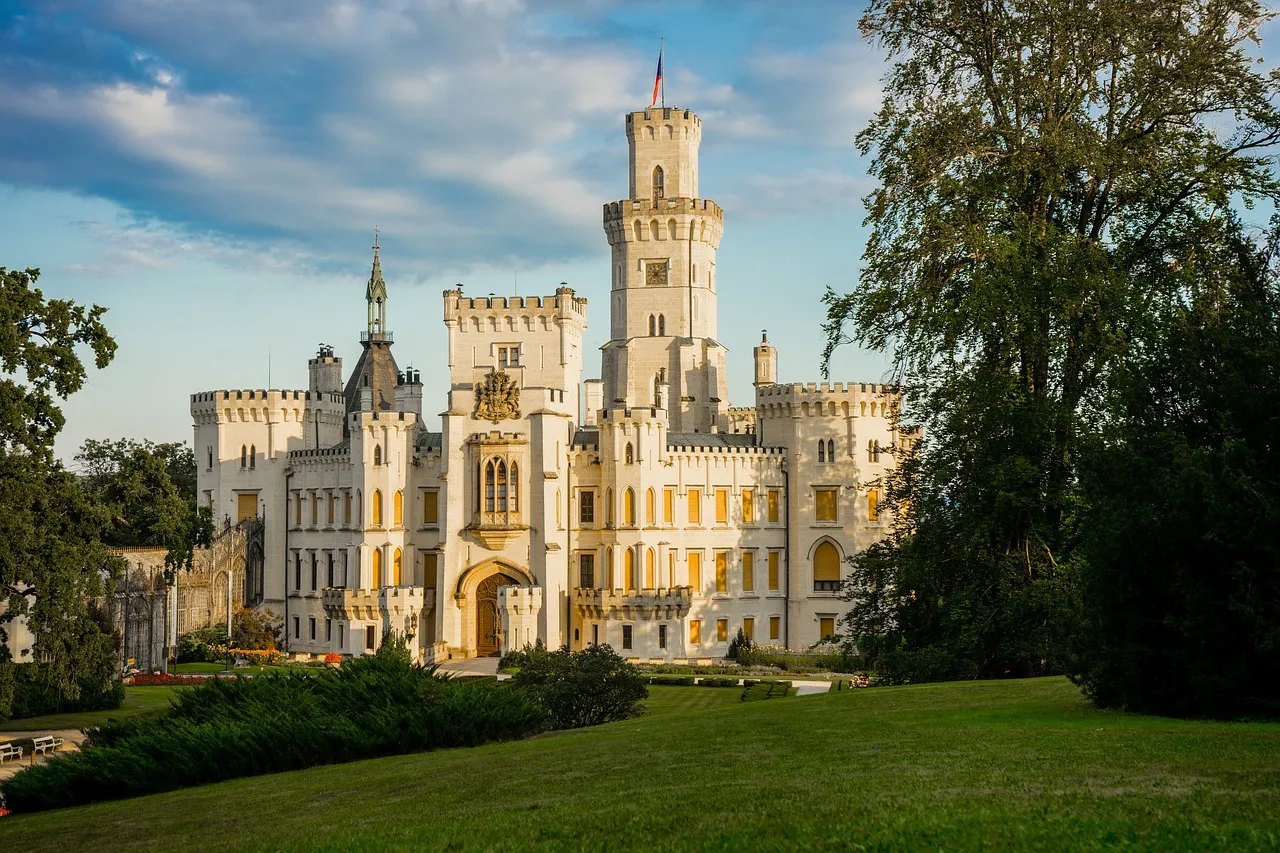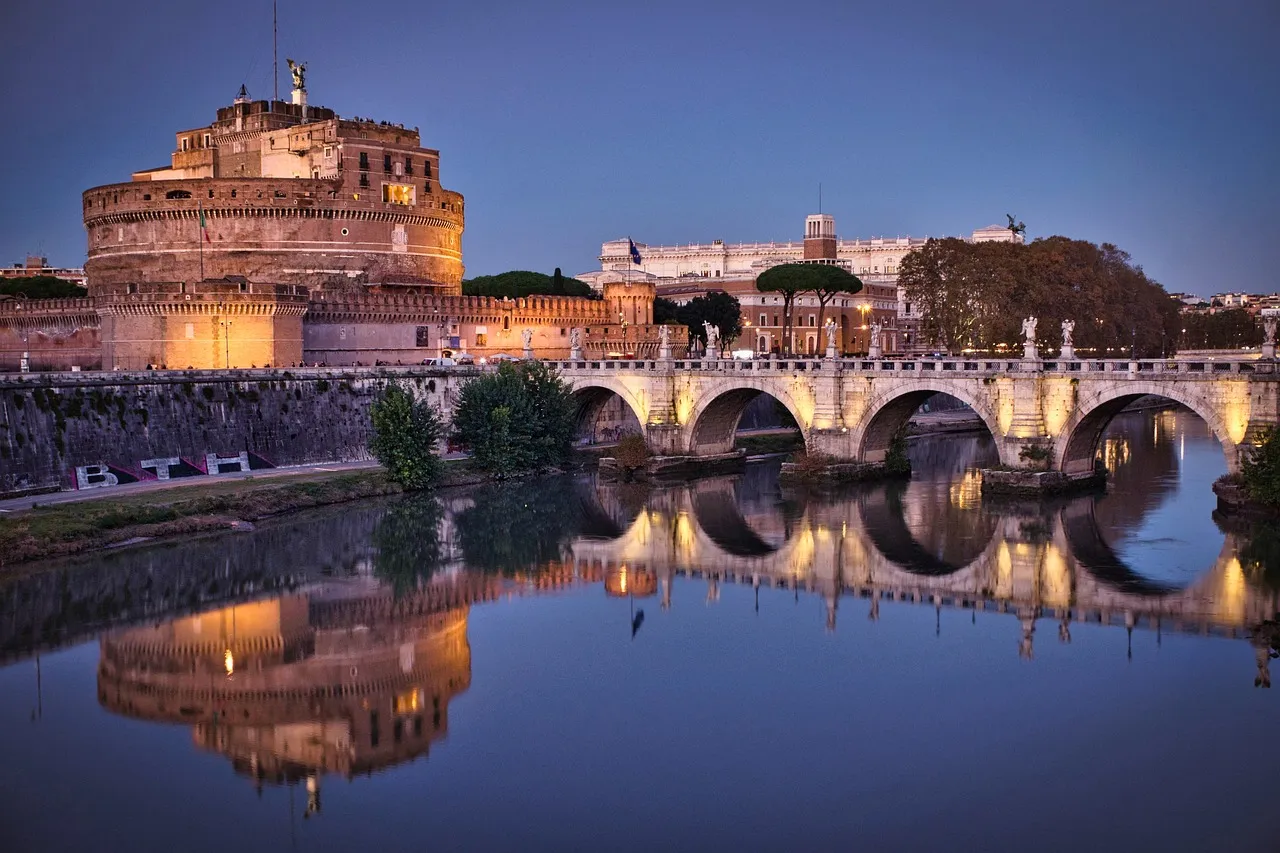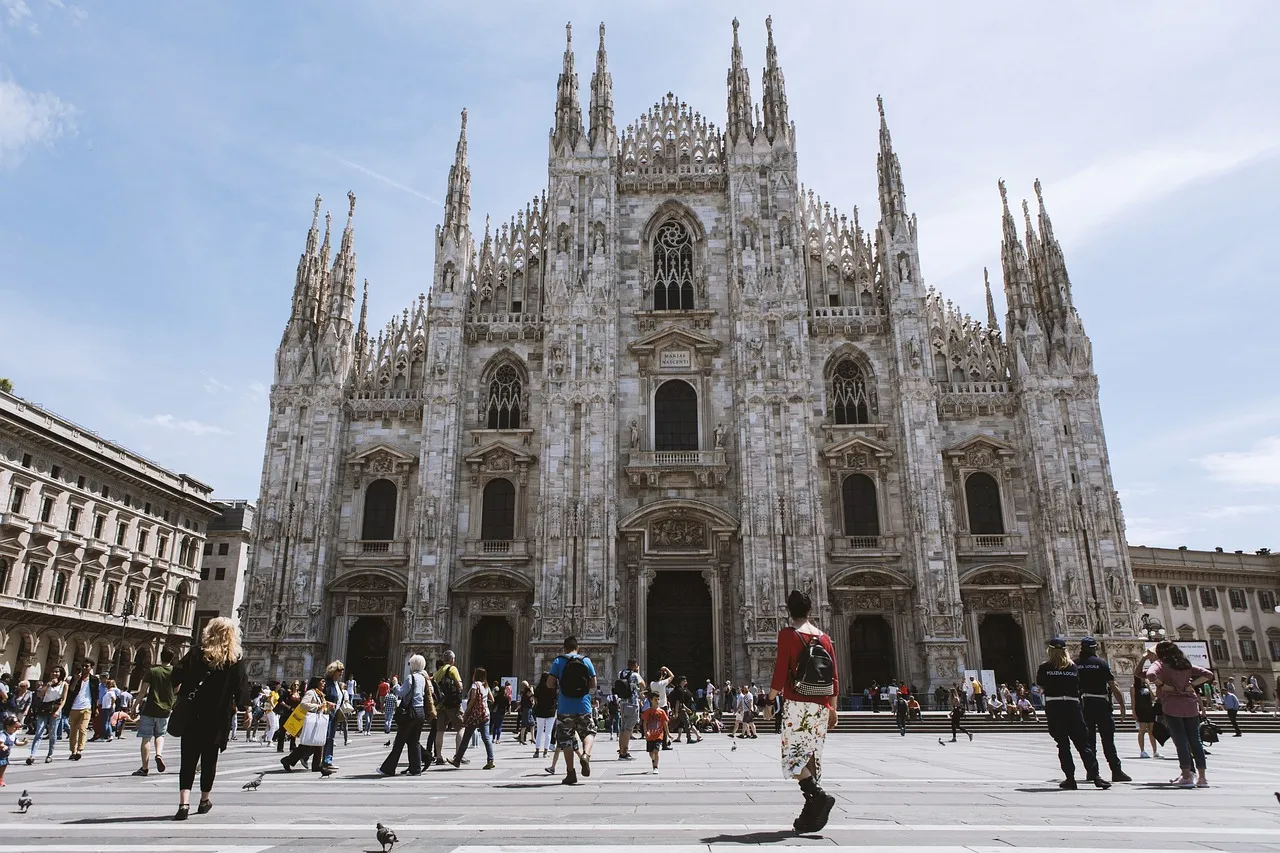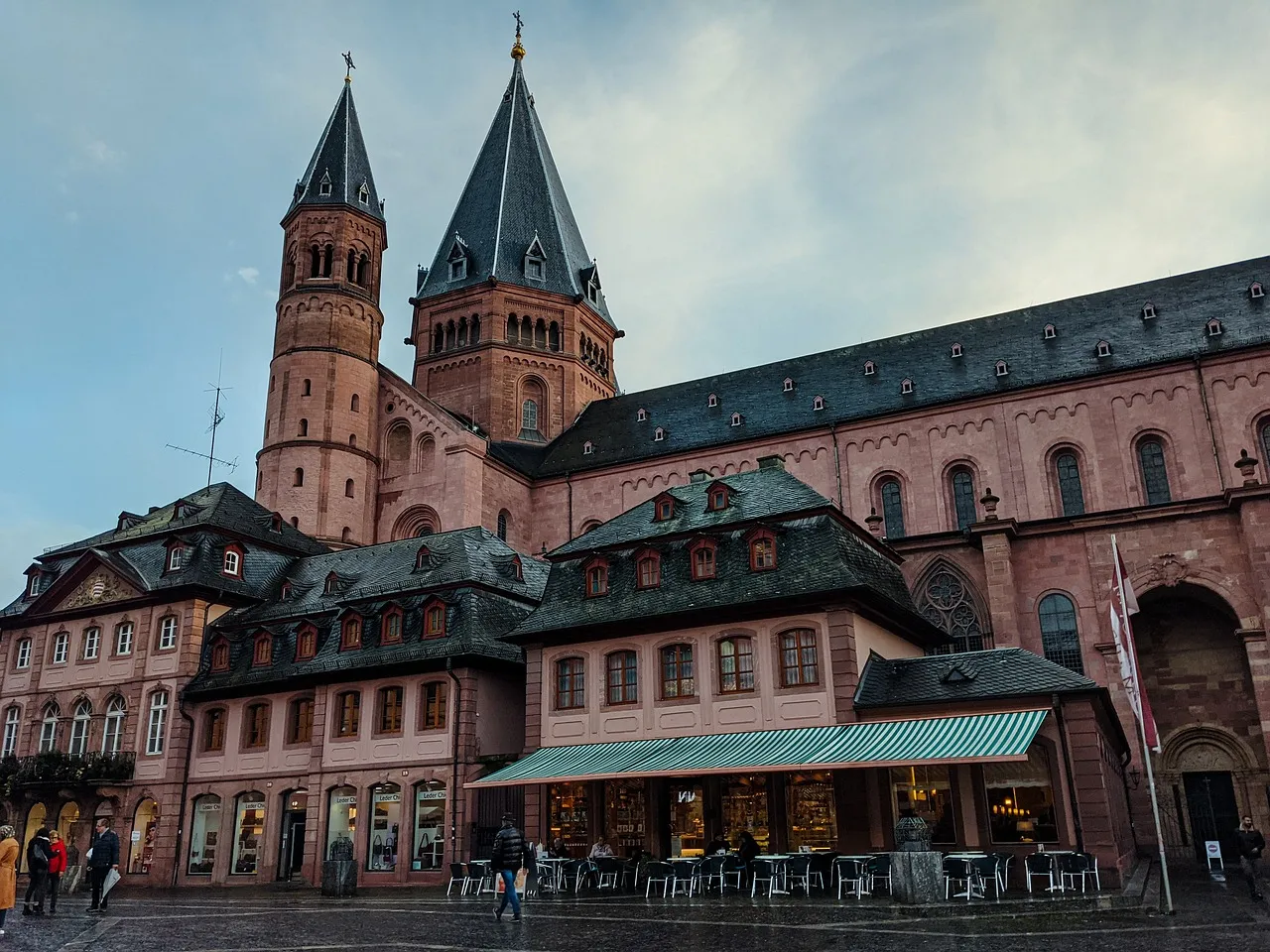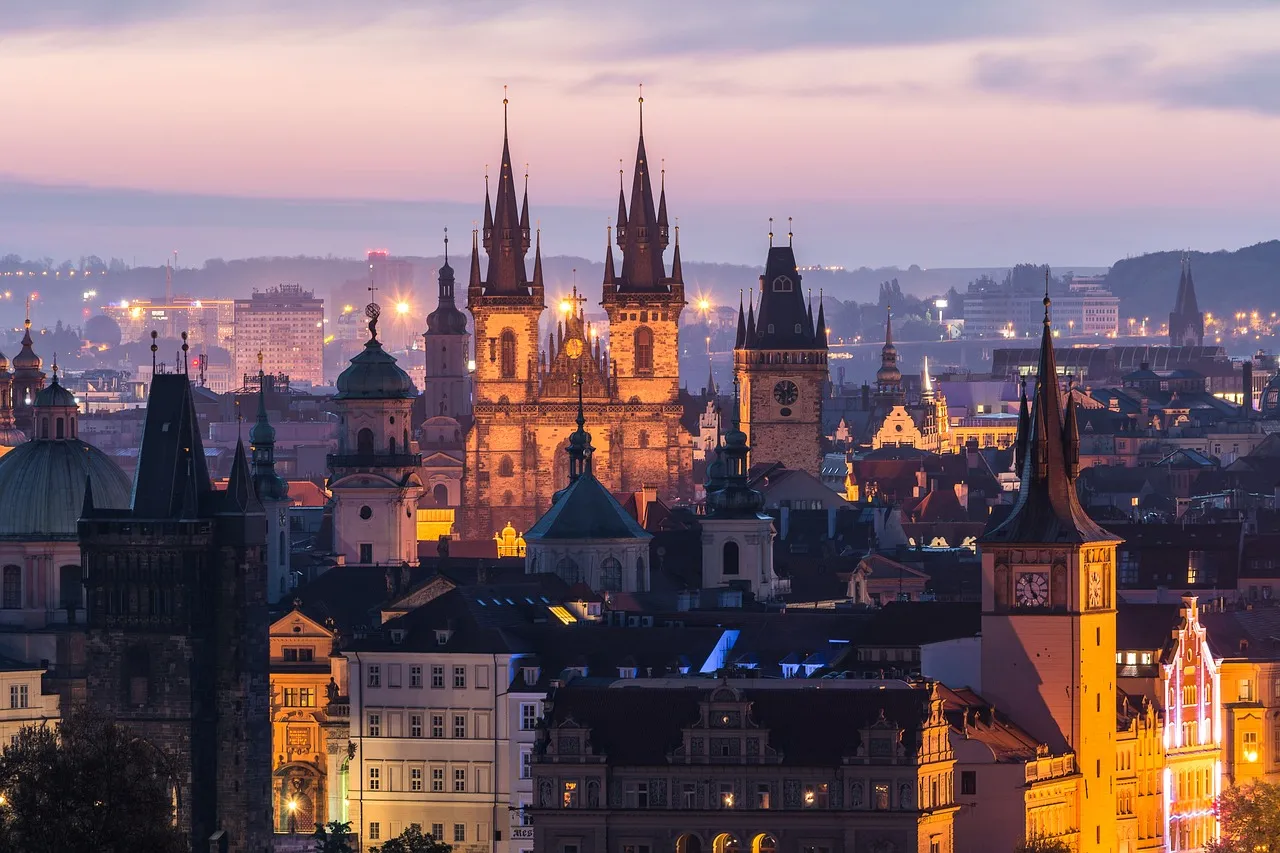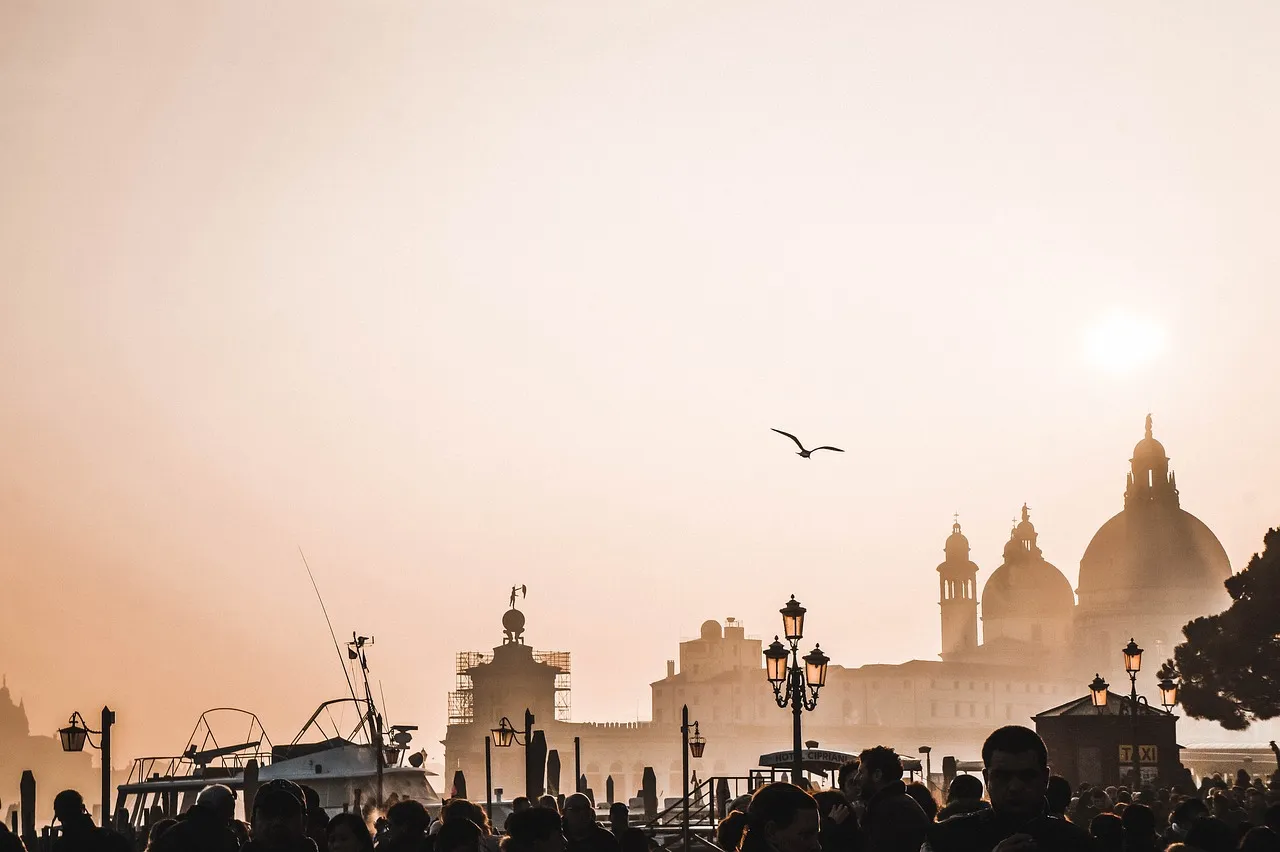Europe, a continent steeped in rich history and cultural heritage, boasts an array of historical landmarks that narrate tales of bygone eras. From medieval castles perched on hillsides to ancient ruins echoing the whispers of civilizations, each landmark stands as a testament to Europe’s enduring legacy. In this exploration, we delve into the heart of Europe’s history, uncovering the stories behind some of its most captivating historical landmarks.
Historical Landmarks of Europe
1. The Colosseum, Rome, Italy: A Grand Amphitheater of Gladiatorial Spectacles
A symbol of ancient Rome’s architectural prowess, the Colosseum, also known as the Flavian Amphitheatre, stands as an iconic testament to the grandeur of the Roman Empire. Constructed in AD 70-80, this colossal amphitheater once hosted gladiatorial contests, animal hunts, and mock sea battles. Its monumental arches and towering structure continue to captivate visitors, offering a glimpse into the ancient world’s spectacle and entertainment.
2. Acropolis of Athens, Greece: A Citadel of Ancient Greek Civilization
Perched atop a rocky outcrop, the Acropolis of Athens is a beacon of ancient Greek civilization. Dominated by the majestic Parthenon, a temple dedicated to the goddess Athena, this UNESCO World Heritage site is a testament to the architectural brilliance and cultural achievements of ancient Athens. The Acropolis offers panoramic views of the city below, inviting visitors to immerse themselves in the legacy of democracy, philosophy, and the arts.
3. Stonehenge, Wiltshire, England: Mystical Megaliths of Prehistoric England
In the rolling hills of Wiltshire, England, stands Stonehenge, a mysterious prehistoric monument that has fascinated scholars and visitors alike for centuries. Comprising massive standing stones arranged in a circular pattern, Stonehenge is believed to have been constructed between 3000 BC and 2000 BC. The purpose of this ancient marvel remains shrouded in mystery, adding an air of intrigue to its enigmatic presence on the English landscape.
4. The Louvre, Paris, France: A Palace Turned Museum of Art and Culture
Originally built as a royal palace in the 12th century, the Louvre in Paris has evolved into the world’s largest art museum. With a storied history that includes serving as a residence for French monarchs, the Louvre now houses an extensive collection of art spanning from ancient civilizations to the 19th century. The iconic glass pyramid entrance invites visitors into a treasure trove of artistic masterpieces, including the renowned Mona Lisa.
5. The Alhambra, Granada, Spain: A Moorish Jewel of Islamic Architecture
Nestled amidst the Sierra Nevada mountains, the Alhambra is a breathtaking palace and fortress complex that showcases the splendor of Islamic architecture. Constructed during the mid-13th century by the Nasrid Dynasty, the Alhambra features intricately designed courtyards, ornate archways, and the mesmerizing Nasrid Palaces. This UNESCO World Heritage site stands as a testament to the flourishing intellectual and artistic achievements of Moorish Spain.
6. The Vatican City, Vatican City State: Spiritual and Cultural Epicenter
Enclaved within the heart of Rome, the Vatican City stands as the world’s smallest independent state and the spiritual center of the Roman Catholic Church. Home to St. Peter’s Basilica, the Sistine Chapel, and the Vatican Museums, this tiny city-state is a treasure trove of religious and artistic marvels. Michelangelo’s masterpiece, the frescoes of the Sistine Chapel, and the awe-inspiring dome of St. Peter’s Basilica draw millions of visitors each year.
7. Prague Castle, Prague, Czech Republic: A Castle Complex of Architectural Marvels
Perched on the hills overlooking the Vltava River, Prague Castle is a sprawling complex that encompasses centuries of Czech history. With structures ranging from the Gothic-style St. Vitus Cathedral to the picturesque Golden Lane, the castle offers a journey through various architectural periods. As the largest ancient castle in the world, Prague Castle is not only a historical gem but also a symbol of the resilience of the Czech people.
8. Neuschwanstein Castle, Bavaria, Germany: A Fairytale Fortress Amidst Alpine Beauty
Nestled amidst the Bavarian Alps, Neuschwanstein Castle is a fairytale fortress that seems to have leapt from the pages of a storybook. Commissioned by King Ludwig II of Bavaria in the 19th century, the castle features medieval-inspired architecture and offers breathtaking views of the surrounding alpine landscapes. Neuschwanstein’s romantic allure has inspired countless tales and serves as a testament to Ludwig’s vision of a fantastical retreat.
9. The Tower of London, London, England: A Fortress of Royalty and Intrigue
A symbol of power, resilience, and sometimes, treachery, the Tower of London has played a central role in English history for nearly a millennium. Originally built by William the Conqueror in the 11th century, the Tower has served as a royal palace, prison, and treasury. Visitors can explore the White Tower, the Crown Jewels, and the infamous Traitor’s Gate, immersing themselves in the complex tapestry of England’s royal history.
10. The Charles Bridge, Prague, Czech Republic: A Historic Span Across the Vltava River
Stretching gracefully across the Vltava River, the Charles Bridge is an iconic symbol of Prague’s architectural charm. Commissioned by King Charles IV in the 14th century, this historic bridge is adorned with 30 Baroque-style statues and offers panoramic views of Prague Castle and the city’s skyline. Strolling across the Charles Bridge is a step back in time, with each cobblestone echoing the footsteps of centuries past.
Europe’s historical landmarks are more than just architectural marvels; they are living chronicles of human civilization, resilience, and creativity. From the grandeur of the Colosseum to the mystique of Stonehenge, each landmark tells a unique story, inviting visitors to immerse themselves in the rich tapestry of Europe’s past. As you traverse these timeless echoes, you not only witness history but become a part of the enduring legacy that defines this extraordinary continent.
Famous historical sites in Europe
Europe, a continent steeped in history, is home to an array of iconic landmarks that serve as timeless witnesses to the ebb and flow of centuries. From ancient ruins to medieval castles, each historical site tells a compelling story of the civilizations that shaped Europe’s cultural tapestry. In this exploration, we unveil the allure of famous historical sites that stand as testaments to the continent’s rich and diverse heritage.
1. The Acropolis of Athens, Greece: Cradle of Ancient Civilization
Perched atop a rocky outcrop, the Acropolis of Athens is a monumental complex that encapsulates the zenith of ancient Greek civilization. Dominated by the Parthenon, a temple dedicated to the goddess Athena, the Acropolis showcases the architectural brilliance and cultural achievements of ancient Athens. As you wander through this UNESCO World Heritage site, you’re transported back to an era where philosophy, democracy, and the arts flourished.
2. The Roman Colosseum, Rome, Italy: Amphitheater of Gladiatorial Grandeur
An epitome of Roman engineering prowess, the Colosseum in Rome stands as a symbol of grandeur and spectacle. Constructed between AD 70 and 80, this colossal amphitheater once hosted gladiatorial contests, animal hunts, and public spectacles. Its iconic arches and imposing structure continue to captivate visitors, offering a vivid glimpse into the ancient Roman appetite for entertainment.
3. Stonehenge, Wiltshire, England: Mystical Megaliths of Prehistory
Amidst the rolling hills of Wiltshire, England, Stonehenge emerges as a mystical and enigmatic prehistoric monument. Comprising massive standing stones arranged in a circular pattern, Stonehenge’s purpose remains a captivating mystery. Dating back to 3000 BC, this UNESCO World Heritage site invites contemplation of ancient rituals, celestial alignments, and the enduring allure of these awe-inspiring megaliths.
4. The Louvre, Paris, France: Citadel of Art and Culture
Originally a royal palace, the Louvre in Paris has transformed into the world’s largest art museum. Housing an unparalleled collection spanning from antiquity to the 19th century, the Louvre is a treasure trove of artistic masterpieces. From the iconic Mona Lisa to the Venus de Milo, the museum’s galleries offer a mesmerizing journey through the evolution of human creativity and expression.
5. The Alhambra, Granada, Spain: Jewel of Islamic Architecture
Nestled amidst the Sierra Nevada mountains, the Alhambra is a testament to the breathtaking beauty of Islamic architecture. Constructed during the mid-13th century by the Nasrid Dynasty, this palace and fortress complex in Granada, Spain, features intricate courtyards, ornate archways, and the enchanting Nasrid Palaces. The Alhambra stands as a beacon of Moorish Spain’s intellectual and artistic zenith.
6. The Vatican City, Vatican City State: Spiritual and Artistic Epitome
Enclaved within Rome, the Vatican City is the smallest independent state globally and the spiritual nucleus of the Roman Catholic Church. Home to St. Peter’s Basilica, the Sistine Chapel, and the Vatican Museums, this tiny city-state is a repository of religious and artistic wonders. Michelangelo’s masterpieces, the frescoes of the Sistine Chapel, and the grandeur of St. Peter’s Basilica collectively offer a transcendent experience.
7. Prague Castle, Prague, Czech Republic: A Castle Complex of Historic Significance
Dominating the Prague skyline, Prague Castle is a sprawling complex that encapsulates centuries of Czech history. From the Gothic-style St. Vitus Cathedral to the charming Golden Lane, the castle is a microcosm of various architectural periods. As the largest ancient castle globally, Prague Castle stands as a symbol of Czech resilience and the enduring spirit of its people.
8. Neuschwanstein Castle, Bavaria, Germany: Fairytale Fortress in Alpine Splendor
Nestled in the Bavarian Alps, Neuschwanstein Castle is a fairytale fortress that seems plucked from the pages of a storybook. Commissioned by King Ludwig II of Bavaria in the 19th century, the castle boasts medieval-inspired architecture and offers stunning views of the alpine landscapes. Neuschwanstein’s romantic allure has inspired countless tales, making it a symbol of Ludwig’s vision of a fantastical retreat.
9. The Tower of London, London, England: Fortress of Royal Intrigue
The Tower of London, standing along the banks of the River Thames, is a fortress with a storied history that spans nearly a millennium. Built by William the Conqueror in the 11th century, the Tower has served as a royal palace, prison, and treasury. With the White Tower, the Crown Jewels, and the infamous Traitor’s Gate, the Tower of London is a multifaceted icon of England’s royal legacy.
10. The Charles Bridge, Prague, Czech Republic: Historic Span Across the Vltava River
Stretching gracefully over the Vltava River, the Charles Bridge is an iconic symbol of Prague’s architectural charm. Commissioned by King Charles IV in the 14th century, this historic bridge is adorned with 30 Baroque-style statues and offers panoramic views of Prague Castle. Each cobblestone on the Charles Bridge echoes the footsteps of centuries, making it a timeless connection to Prague’s storied past.
Famous historical sites in Europe are not mere relics; they are living testaments to the triumphs, tragedies, and enduring legacies of civilizations. As you traverse these iconic landmarks, you become a part of the narrative woven into Europe’s cultural fabric. From the Acropolis to Neuschwanstein Castle, each site offers a glimpse into the diverse tapestry of history that defines this extraordinary continent.
UNESCO World Heritage landmarks in Europe
Europe, a continent steeped in history and cultural diversity, hosts a plethora of UNESCO World Heritage landmarks that stand as testaments to human achievement, creativity, and the richness of the region’s heritage. In this exploration, we embark on a journey to discover and appreciate the UNESCO World Heritage landmarks that grace the European landscape, each site a treasure trove of history, art, and natural wonders.
1. The Acropolis of Athens, Greece
Perched majestically atop a rocky outcrop, the Acropolis of Athens is a UNESCO World Heritage site that encapsulates the zenith of ancient Greek civilization. Dominated by the Parthenon, a temple dedicated to the goddess Athena, the Acropolis showcases the architectural brilliance and cultural achievements of ancient Athens. As you wander through this historic site, you are transported back to an era where philosophy, democracy, and the arts flourished.
2. The Historic Centre of Rome, Italy
Rome, often referred to as the “Eternal City,” boasts a UNESCO World Heritage site encompassing its historic center. From the iconic Colosseum, where gladiators once battled, to the Roman Forum, a hub of ancient political and social life, the historic center of Rome is an open-air museum of human history. Each cobblestone narrates tales of the Roman Empire, Renaissance art, and the enduring spirit of this timeless city.
3. Stonehenge, Wiltshire, England
In the rolling hills of Wiltshire, England, Stonehenge stands as a UNESCO World Heritage site shrouded in mystery. Comprising massive standing stones arranged in a circular pattern, Stonehenge’s purpose remains a captivating enigma. Dating back to 3000 BC, this prehistoric monument invites contemplation of ancient rituals, celestial alignments, and the enduring allure of these awe-inspiring megaliths.
4. The Historic Centre of Vienna, Austria
Vienna, the imperial capital of the Habsburg Empire, boasts a UNESCO World Heritage site in its historic center. From the opulent Schönbrunn Palace to the magnificent St. Stephen’s Cathedral, Vienna’s historic core is a harmonious blend of architectural styles spanning centuries. The city’s grandeur reflects the cultural and political significance it held throughout European history.
5. The Tower of London, London, England
Standing stoically along the banks of the River Thames, the Tower of London is a UNESCO World Heritage site with a storied history that spans nearly a millennium. Built by William the Conqueror in the 11th century, the Tower has served as a royal palace, prison, and treasury. With the White Tower, the Crown Jewels, and the infamous Traitor’s Gate, the Tower of London is a multifaceted icon of England’s royal legacy.
6. Mont-Saint-Michel and its Bay, France
Rising dramatically from the tidal flats of Normandy, Mont-Saint-Michel is a medieval abbey perched atop a rocky island. Designated as a UNESCO World Heritage site, this architectural marvel has captured the imagination of visitors for centuries. From the narrow streets winding through the abbey to the panoramic views of the surrounding bay, Mont-Saint-Michel is a testament to the ingenuity of medieval builders.
7. The Vatican City, Vatican City State
Enclaved within Rome, the Vatican City is the smallest independent state globally and the spiritual nucleus of the Roman Catholic Church. Home to St. Peter’s Basilica, the Sistine Chapel, and the Vatican Museums, this tiny city-state is a repository of religious and artistic wonders. Michelangelo’s masterpieces, the frescoes of the Sistine Chapel, and the grandeur of St. Peter’s Basilica collectively offer a transcendent experience.
8. The Palace and Park of Versailles, France
Versailles, the epitome of opulence and grandeur, is a UNESCO World Heritage site that reflects the splendor of the French monarchy. The Palace of Versailles, with its Hall of Mirrors and lavish gardens, is an iconic symbol of absolute monarchy. As you stroll through the Hall of Mirrors or wander through the meticulously landscaped gardens, you are transported to an era of regal extravagance.
9. The Alhambra, Granada, Spain
Nestled amidst the Sierra Nevada mountains, the Alhambra is a UNESCO World Heritage site and a testament to the breathtaking beauty of Islamic architecture. Constructed during the mid-13th century by the Nasrid Dynasty, this palace and fortress complex in Granada, Spain, features intricate courtyards, ornate archways, and the enchanting Nasrid Palaces. The Alhambra stands as a beacon of Moorish Spain’s intellectual and artistic zenith.
10. The Historic Centre of Prague, Czech Republic
Prague, often called the “City of a Hundred Spires,” boasts a UNESCO World Heritage site in its historic center. From the Gothic-style St. Vitus Cathedral to the charming Golden Lane, the center is a microcosm of various architectural periods. As the largest ancient castle globally, Prague Castle stands as a symbol of Czech resilience and the enduring spirit of its people.
UNESCO World Heritage landmarks in Europe are not just monuments; they are living embodiments of the continent’s rich and diverse cultural heritage. From the ancient marvels of Athens to the medieval charm of Mont-Saint-Michel and the grandeur of Versailles, each site invites us to appreciate the collective achievements of humanity. As we explore these UNESCO treasures, we connect with the threads of history that have shaped the European landscape and celebrate the enduring beauty of these cultural gems.
Architectural history of Europe
Europe, a continent rich in cultural diversity, stands as a living canvas adorned with architectural masterpieces that narrate tales of different epochs. The architectural history of Europe is a journey through time, weaving together the intricate threads of innovation, cultural exchange, and artistic expression. In this exploration, we unravel the layers of Europe’s architectural heritage, each building a testament to the spirit of its era.
1. Ancient Greece and Rome: Pillars of Classical Influence
The foundations of European architectural history rest upon the pillars of Ancient Greece and Rome. Greek architecture, characterized by the iconic Doric, Ionic, and Corinthian columns, laid the groundwork for classical aesthetics. The Romans, inspired by Greek principles, advanced architectural engineering with the invention of arches, domes, and aqueducts. The enduring legacy of the Parthenon in Athens and the Colosseum in Rome stands as a testament to the timeless appeal of classical design.
2. Medieval Marvels: Gothic Cathedrals and Romanesque Splendors
As Europe transitioned into the medieval period, architectural styles evolved to reflect spiritual and societal changes. Gothic cathedrals, such as Notre-Dame in Paris and the Chartres Cathedral in France, soared to new heights with pointed arches, ribbed vaults, and flying buttresses. Meanwhile, Romanesque architecture, with its sturdy stone structures and rounded arches, manifested in landmarks like Durham Cathedral in England. These medieval marvels embodied the aspirations and devotion of a society deeply rooted in religious beliefs.
3. Renaissance Revival: Rebirth of Classical Ideals
The Renaissance marked a revival of classical ideals, ushering in an era of artistic and intellectual rebirth. Architects like Filippo Brunelleschi and Leon Battista Alberti embraced mathematical precision and harmonious proportions. The iconic dome of Florence Cathedral and the symmetrical beauty of the Palazzo Rucellai in Florence exemplify Renaissance principles. Across Europe, from Italy to France and beyond, the Renaissance rekindled the flame of classical aesthetics, influencing palaces, churches, and civic structures.
4. Baroque Extravaganza: Theatricality and Grandeur
The Baroque period introduced a theatrical and grandiose approach to architecture. Characterized by elaborate ornamentation, dramatic lighting, and intricate details, Baroque buildings aimed to evoke powerful emotional responses. St. Peter’s Basilica in the Vatican, designed by Gian Lorenzo Bernini, epitomizes the grandeur of Baroque architecture. Versailles Palace in France, with its opulent gardens and expansive layout, reflects the exuberance of the era’s monarchies.
5. Rococo Whimsy: Ornate Elegance and Playful Details
An evolution of the Baroque, Rococo architecture embraced whimsicality and ornate elegance. Delicate pastel colors, asymmetrical designs, and intricate ornamentation defined Rococo structures. The Zwinger Palace in Dresden, Germany, with its lighthearted façade and graceful gardens, exemplifies the Rococo spirit. As a reaction against the formality of previous styles, Rococo brought a sense of playfulness to European architecture during the 18th century.
6. Neoclassical Symmetry: Enlightenment Rationality
In the wake of the Rococo era, the Neoclassical movement emerged as a return to classical principles but with a rational and restrained approach. Influenced by the Enlightenment, Neoclassical structures prioritized symmetry, simplicity, and clarity of form. The British Museum in London and the Brandenburg Gate in Berlin are iconic examples of Neoclassical architecture, embodying the Enlightenment ideals of reason and knowledge.
7. Industrial Revolution Impact: Rise of Victorian and Gothic Revival
The Industrial Revolution brought about significant societal changes, reflected in the architectural landscape. The Victorian era witnessed a blend of eclectic styles, including the Gothic Revival. The Houses of Parliament in London, designed by Charles Barry and Augustus Pugin, showcase the grandeur of Victorian Gothic. These structures, adorned with pointed arches and intricate details, captured the spirit of an era undergoing profound transformation.
8. Art Nouveau: Organic Forms and Decorative Flourishes
As the 19th century gave way to the 20th, Art Nouveau emerged as a departure from historicism. Characterized by organic forms, flowing lines, and decorative flourishes, Art Nouveau embraced a total art approach. The Casa Batlló in Barcelona, designed by Antoni Gaudí, is a masterpiece of Art Nouveau, featuring undulating façades and vibrant ceramic tiles. This style permeated architecture, decorative arts, and even urban design, leaving an indelible mark on European cities.
9. Modernism and the Bauhaus Movement: Form Follows Function
The early 20th century witnessed the rise of Modernism, rejecting ornamentation in favor of functional simplicity. The Bauhaus movement, founded by Walter Gropius, championed the integration of art, craftsmanship, and technology. The Bauhaus School building in Dessau, Germany, exemplifies the movement’s principles of form following function. Modernist architects like Le Corbusier and Mies van der Rohe reshaped the urban landscape with minimalist designs and innovative use of materials.
10. Contemporary Eclecticism: Embracing Diversity and Sustainability
In the contemporary architectural landscape, eclecticism prevails, with architects drawing inspiration from various styles and prioritizing sustainability. Renzo Piano’s The Shard in London, with its sleek glass façade, and the avant-garde design of the Guggenheim Museum Bilbao by Frank Gehry showcase the diversity of modern European architecture. Sustainability has become a central focus, with eco-friendly materials and energy-efficient designs shaping the buildings of today.
The architectural history of Europe is a captivating journey through time, marked by the evolution of styles, ideologies, and societal shifts. From the classical grandeur of ancient civilizations to the avant-garde designs of the present, each era has left an indelible imprint on the continent’s built environment. As Europe continues to embrace architectural innovation, the tapestry of its history unfolds, inviting us to appreciate the diverse and enduring legacy of its architectural heritage.
Europe historical travel guide
Embarking on a historical journey through Europe is like flipping through the pages of a captivating novel. With each step, you traverse centuries, unraveling the tales of ancient civilizations, medieval kingdoms, and the birth of modern nations. This historical travel guide invites you to explore the rich tapestry of Europe’s past, from iconic landmarks to hidden gems that whisper stories of bygone eras.
1. Rome, Italy: Where Antiquity Beckons
No historical exploration of Europe is complete without a visit to Rome, the eternal city. Begin your journey amidst the remnants of the mighty Roman Empire at the Colosseum, where gladiators once fought for glory. Wander through the Roman Forum, a bustling center of political and social life, and stand in awe beneath the dome of the Pantheon, a marvel of ancient engineering. As you traverse the cobblestone streets, every step echoes the footsteps of emperors, philosophers, and artists who shaped Western civilization.
2. Athens, Greece: Cradle of Democracy and Philosophy
Travel back in time to ancient Greece, where the foundations of democracy, philosophy, and the arts were laid. The Acropolis of Athens, crowned by the Parthenon, invites you to marvel at the architectural brilliance of the classical era. Explore the Agora, once a bustling marketplace and agora of ideas, and stroll through the historic Plaka district to soak in the vibrant ambiance of this ancient city. Athens is a living museum where the echoes of Socrates, Plato, and Aristotle still resonate.
3. Stonehenge, Wiltshire, England: Mysteries in Stone
Journey to the English countryside and stand in awe before the enigmatic Stonehenge. This prehistoric monument, dating back to 3000 BC, continues to captivate and mystify visitors. As you ponder the purpose of these colossal stones arranged in a circular pattern, you’re transported to a time when ancient cultures aligned structures with celestial events. Whether you visit during a solstice or a quiet afternoon, the aura of Stonehenge remains an enduring testament to the ingenuity of our ancestors.
4. Paris, France: Layers of History in the City of Light
Paris, often hailed as the City of Light, is a treasure trove of historical wonders. Begin your exploration at the Notre-Dame Cathedral, a masterpiece of French Gothic architecture. Stroll along the Seine River, passing by landmarks like the Louvre Museum and the Musée d’Orsay, which house art spanning centuries. The historic district of Le Marais offers a glimpse into medieval Paris, with its narrow streets and half-timbered houses. Paris is a city where each arrondissement tells a different story, from the medieval Île de la Cité to the grandeur of the Champs-Élysées.
5. Prague, Czech Republic: A Fairytale in Stone
Nestled along the Vltava River, Prague is a city that feels like a living fairytale. The historic center, a UNESCO World Heritage site, transports you to a time of kings and queens. Explore Prague Castle, the largest ancient castle complex in the world, and walk across the iconic Charles Bridge adorned with statues of saints. Wander through the charming Old Town Square, where the astronomical clock ticks away the centuries. Prague is a city that effortlessly weaves together Gothic, Baroque, and Romanesque architecture.
6. Florence, Italy: Renaissance Reverie
Florence, the cradle of the Renaissance, beckons with its artistic and intellectual legacy. The Uffizi Gallery houses a wealth of Renaissance masterpieces, including works by Botticelli, Leonardo da Vinci, and Michelangelo. Climb to the top of the Florence Cathedral’s dome for panoramic views of the city, and stroll across the Ponte Vecchio, a medieval bridge lined with shops. Florence is a city where the Renaissance spirit is not confined to museums but permeates every square and street corner.
7. Istanbul, Turkey: Where East Meets West
Once known as Byzantium and later as Constantinople, Istanbul is a city that straddles two continents and encompasses a rich tapestry of history. Visit the Hagia Sophia, a marvel of Byzantine architecture, and the Blue Mosque, adorned with intricate tiles and minarets. Wander through the Grand Bazaar, a labyrinthine marketplace that has stood for centuries. Istanbul’s history unfolds like a palimpsest, with layers of Roman, Byzantine, and Ottoman influences waiting to be discovered.
8. Edinburgh, Scotland: Tales of Tartan and Stone
Edinburgh, the capital of Scotland, invites you to step into a world of medieval castles, cobbled streets, and tales of bravery. Explore the Edinburgh Castle, perched atop Castle Rock, and walk down the historic Royal Mile, where shops and pubs echo with centuries-old stories. Visit the Holyrood Palace, the official residence of the British monarch in Scotland, and hike up Arthur’s Seat for panoramic views of the city. Edinburgh is a city where the clash of swords and the rustle of tartan are still felt in the cool Scottish breeze.
Europe’s historical tapestry is a complex weave of civilizations, movements, and moments that have shaped the world. As you traverse the continent, from the ancient streets of Rome to the medieval charm of Edinburgh, you’re not merely a tourist; you become a time traveler, connecting with the stories imprinted on each stone and echoing through the corridors of history. This historical travel guide invites you to embrace the past, immerse yourself in the narratives, and discover the magic that lies within Europe’s historical treasures.
How to explore European history
Europe, a continent steeped in history, invites curious minds to embark on a journey through time. From the ancient ruins of Rome to the medieval streets of Prague, exploring European history is like delving into a captivating novel with chapters spanning centuries. This guide is designed to help you navigate the rich tapestry of European history, providing insights and tips on how to make the most of your historical exploration.
1. Do Your Homework: Preparing for the Journey
Before setting foot on European soil, arm yourself with knowledge. Dive into books, documentaries, and online resources to understand the broader historical context of the regions you plan to visit. Familiarize yourself with key events, influential figures, and the cultural shifts that have shaped Europe over the centuries. This background knowledge will enhance your appreciation as you walk through historical sites, connecting the dots of the past.
2. Plan Your Itinerary: Crafting a Chronological Path
Europe’s history is vast and diverse, so plan your itinerary strategically. Consider organizing your journey chronologically, starting with ancient civilizations and progressing through the medieval, Renaissance, and modern eras. This approach allows you to witness the evolution of architecture, art, and societal structures as you move from one destination to another. Create a balanced itinerary that covers major historical periods and includes both well-known landmarks and hidden gems.
3. Immerse Yourself in Museums and Historical Sites
Europe boasts an abundance of museums and historical sites that serve as portals to the past. Whether it’s the British Museum in London, the Louvre in Paris, or the Acropolis Museum in Athens, these institutions house artifacts that provide tangible connections to history. Take your time exploring each exhibit, read informational plaques, and consider hiring local guides for a deeper understanding of the historical significance of the items on display.
4. Walking Tours: Strolling Through History
One of the most immersive ways to explore European history is through walking tours. Many cities offer guided tours that take you through historical neighborhoods, pointing out architectural wonders, sharing anecdotes, and providing insights into the daily lives of people from different eras. Walking tours offer a dynamic and interactive experience, allowing you to absorb the atmosphere and details that might be missed in a conventional tour.
5. Attend Historical Events and Festivals
Europe’s calendar is peppered with historical events and festivals that offer a glimpse into the past. From medieval reenactments to Renaissance fairs, these events transport you to bygone eras. Research the local calendar of events during your visit and consider planning your trip around historical festivals. Participating in these festivities provides a unique opportunity to witness historical traditions, costumes, and activities in a lively and engaging manner.
6. Explore Lesser-Known Historical Sites
While iconic landmarks like the Colosseum or the Tower of London are must-visit, don’t overlook the charm of lesser-known historical sites. Europe is dotted with hidden gems that offer a more intimate connection with history. Wander through medieval villages, visit ancient monasteries, or explore forgotten castles tucked away from the bustling tourist routes. These hidden treasures often reveal unique stories and provide a more authentic experience.
7. Engage with Locals: Uncover Oral Histories
Locals are often the keepers of oral histories and traditions passed down through generations. Take the time to engage with residents, whether it’s striking up conversations in cafes, attending community events, or visiting local markets. The stories shared by locals provide a living perspective on historical events, offering insights into how the past continues to influence the present.
8. Culinary Exploration: Taste the History
Food is an integral part of a region’s history, reflecting influences from various cultures and historical periods. Explore the culinary scene in each destination, sampling traditional dishes and regional specialties. Many European cities have restaurants housed in historic buildings, providing an opportunity to dine amidst the architectural remnants of the past. Indulging in local cuisine is a delicious way to connect with the flavors and stories of European history.
9. Document Your Journey: Create a Travel Journal
As you traverse through time, document your experiences in a travel journal. Capture the details of each historical site, jot down interesting anecdotes from walking tours, and record your impressions of local cultures. Include sketches, photographs, and mementos to create a personalized chronicle of your historical exploration. Your travel journal becomes a tangible souvenir, preserving the memories of your journey through European history.
10. Reflect and Share: Bringing History Home
At the end of your European historical adventure, take time to reflect on the insights gained and the stories encountered. Share your experiences with friends, family, or fellow history enthusiasts. Whether through blog posts, social media, or engaging conversations, sharing your journey contributes to the collective understanding and appreciation of European history.
Exploring European history is a journey that transcends time and space, offering a profound connection to the roots of our collective heritage. By immersing yourself in museums, participating in festivals, engaging with locals, and documenting your experiences, you transform your historical exploration into a living, breathing narrative. As you navigate the rich tapestry of European history, remember that each step is an opportunity to witness the echoes of the past and contribute to the ongoing story of this remarkable continent.
